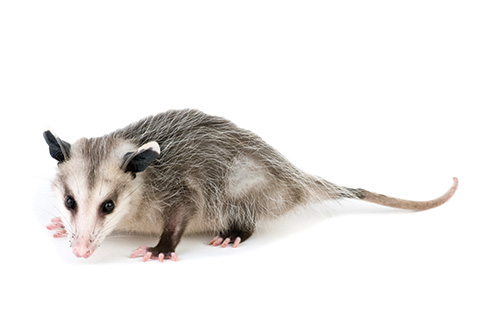
PHOTO: MAWEAR/ISTOCK / GETTY IMAGES PLUS/GETTY IMAGES
It is generally believed that structures must be located in wooded areas, foothill communities, and/or surrounded by wildlands to be impacted by wildlife and their associated problems. All too often, I have heard “You have to be living in the country” to be bothered by wild animals. Nothing could be further from the truth.
Wildlife are now encountered everywhere in California, including downtown Los Angeles. Today, I’d like to focus on details on major, new developing housing projects in southern Ontario, Calif., that are displacing resident wildlife populations and pushing them into compressed, marginal habitats where they seek sanctuary.
The area in question previously encompassed land that was occupied by wine grape vineyards that were abandoned some time ago and dairies with their surrounding pasture lands. Construction of houses on this land involved major disruption of the animal communities that occupied these habitats. For the displaced creatures, the disruption meant “run for your life” or perish. The question is: Where to go?
In this case, a 100-foot-wide Southern California Edison (SCE) power line corridor became a refuge. The two major utility companies, namely, SCE and Pacific Gas and Electric, have approximately 53,000 and 81,000 miles, respectively, of overhead electrical lines in the state of California. SCE performs periodic mechanical weed abatement in its corridors. There is no irrigation on this strip of land, and vegetation quickly dries up soon after winter rains.
SKUNKS, SQUIRRELS AND MORE
My personal observations reveal that the power line corridor is home to striped skunks, ground squirrels, possum, raccoons, cottontail rabbits, gophers, gopher snakes, American kestrels, and red-tailed hawks. Transitory visitors are also sometimes seen in the area.
In this area, there are some permanent harborages/refugia for wildlife that are not affected by periodic mechanical weed abatement. However, drying out of the vegetation and disking of the land mean hard times for the animals that live there. Wildlife are forced to cross streets to search for food and water in neighboring residences — particularly those with irrigated landscapes or pet food and water bowls that are left out overnight.
Crossing the streets brings the wildlife in conflict with vehicles that result in road kills. Yet the animals do what they must to survive. Skunks and possum search for and consume fruit in trees and on the ground in residential yards. Backyard fruit trees that overhang sidewalks drop fruit on the ground, creating easy lunch for the animals.
Thus, pestiferous wildlife can create lots of problems for homeowners, such as:
- Pet food and water bowl contamination. The California Department of Fish and Wildlife has been warning pet owners of an unusually high number of canine distemper virus cases in wildlife populations statewide. It’s being traced to infected wild animals that eat or drink from bowls left out for pets.
- Ectoparasite transmission. Wildlife can harbor and transport ectoparasites, such as fleas, mites and ticks to pets and people.
- Scat issues. Scats can cause fly problems, pet problems and even human infections.
- Odor issues. Homeowners do not usually see skunks, but they can smell their presence.
- Noise issues. Wildlife can disturb peoples’ sleep with their noisy caterwauling and confrontation with outdoor pets in the middle of the night.
- Ruined landscape. In addition to ruining fruit and vegetables from trees and gardens in the yard, wildlife is constantly digging unsightly holes in lawns and mulched areas looking for grubs. They also damage garbage bins and scatter trash.
- Acting as “squatters.” From denning in firewood, lumber and other piles of miscellaneous materials on properties to taking up residence in chimneys, substructural areas, and attics, wildlife can be unwelcome guests to unsuspecting homeowners who encounter them.
In conclusion, large-scale construction projects force wildlife into marginal habitats, from where they invade nearby residences in search of harborage, food and water. These marauding visits cause a lot of problems for homeowners, and it’s a wise pest management professional who anticipates such problems and offers customers — and perspective customers — preventive strategies as quickly as possible.
DR. GULMAHAMAD, BCE, is an urban and structural entomologist and consultant based in southern California.
Leave A Comment